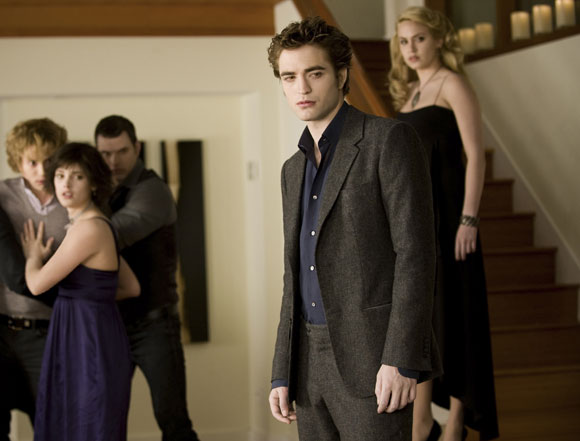Blood Lust

Did Bram Stoker ever suspect that Dracula would become a cultural touchstone in the evolution of gothic romance? Did he endeavor to revolutionize the horror genre in the same vein as Mary Shelley’s hauntingly humanizing Frankenstein? Did he see a man or a monster in Vlad Tepes when he borrowed from the blood-stained legacy of the Hungarian tyrant? In the years since Stoker’s seminal work, others have fallen in love with his vampire mythology, so malleable as to be receptive to constant reinterpretation.
Hollywood’s vision of the Transylvanian Prince became iconic; Bela Lugosi’s death-blanched skin framed by a raven widow’s peak, his cruelty cloaked by a dashing suit and cape. Maidens were boneless beneath his deep voice and strong embrace. The hunt was a seduction, his teeth both penetrating and life-draining. It was a petit mort many women privately fantasized about succumbing to.
Author Ann Rice made her vampires both beautiful and obscene; as susceptible to piety and corruption as any human being. She stripped them of sexuality, replacing it with a classic romanticism that transcended all gender boundaries. Louis hated himself for loving Lestat. Marius found his muse in the eternal youth known as Armand. These vampires were bound by agape, not eros, and therefore pop culture was able to accept Rice’s proclivity for same-sex pairings.
Most recently, Stephenie Meyer has sought to re-imagine the vampire legend and in the process exposed an entirely new generation to the appeal of the perfect undead. At the center of her universe is an unremarkable teenaged heroine named Bella Swan and her century-old beau, the mysterious Edward Cullen. Many have interpreted the saga is an allegory for abstinence – Edward struggles to control his overwhelming bloodlust while in his beloved’s presence; in turn, Bella denies her own hunger for Edward’s form, which is otherworldly in its beauty. Meyer has taken the Lugosi Dracula’s sexual appeal and the Rice vampires’ pristene asexuality and brilliantly merged them for easy teen consumption.
At the center of this current phenomenon remains the complexity of the vampire myth, and how it has become inextricably linked to both romance and sex. By stripping her vampires of sexual lust, did Ann Rice tap into the appeal of the “safe” homosexual male, devoid of any predatory threat towards females? Is this why the porcelain-faced, willow-limbed – and essentially neutered – Edward Cullen possesses such an ardent female fanbase?
In truth, women are not innocent of objectifying males. Men openly approve of feminine sexuality, particularly the appeal of lesbian eroticism. Within the anonymity of the internet, where society is less prone to judgment, multitudes of women express their appreciation of masculine sexuality in the form of homoerotic fiction often known as “slash.” There, they can remove themselves from the equation and operate as voyeurs in a world where a romantic pair is comprised of physical and emotional equals. Lust is safe from afar; this is a rule that females have been taught from a young age. However, that coda has been seized and re-invented by women authors exploring the vampire myth, who in turn gave their peers permission to view men as meriting desire outside of a female reference point. Little did Bram Stoker know that his horror novel would eventually play a seminal role in the evolution of feminine sexual emancipation. Dracula is no longer the predator he once was.